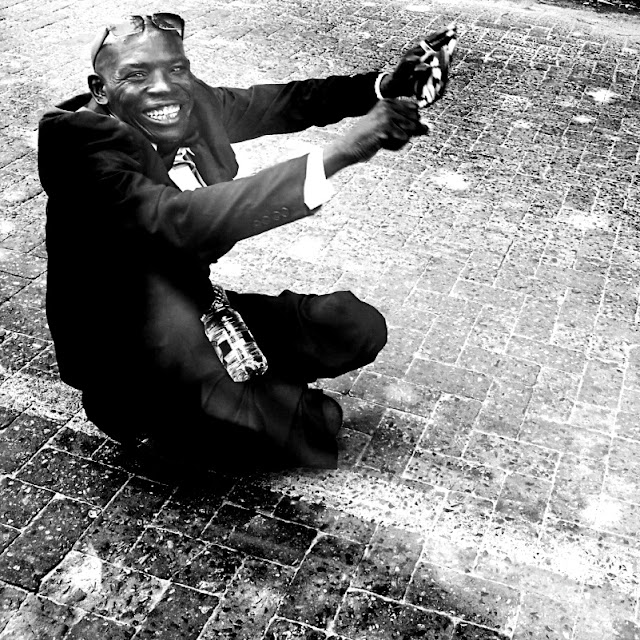 |
| traffic man with tuxedo and wheels |
On the official front, an elderly police lady has been monitoring the traffic light junction on Falomo bridge (leaving Victoria Island in the direction of Ikoyi). She has been there for years. She brings comfort to a multitude of drivers stuck in traffic jams. She now looks old and tired but loves her position on the bridge. Truth be told, once one gets cosy with the weather and exhaust fumes, the view is rather pleasant. She cares for commuters like a mother for her children. She will never be really hard on people but lecture with signs those whose bad behaviour she spotted so that they know she has seen them. I remember a day where my driver was attempting to change lane in order to beat the approaching red light that he felt like dodging. She fingered at him which made him stop and smile. My driver told me that the lady had been promoted a few years ago to a position in which she would have been sitting at a desk in a police office and would have had to send her junior staff on the ground. But she refused to go working in an office and stuck to her position on the bridge. Perhaps the perks given as appreciation by commuters were in themselves a good enough reason to stay put on the bridge. God knows when government salaries are paid, sometimes.
On the self-appointed front, a smart looking one-legged man is using a skateboard to glide through the traffic on Sansusi Fafunwa street on the stretch between Karimu Kotun and Akin Adesola streets. He has been working there for a some time, at some point with a similarly handicapped colleague, directing traffic with foam sticks, that are normally used by kids to stay afloat in swimming pools. He used to wear a pair of jeans and a t-shirt. But recently, he traded his clothes for a proper tuxedo with white shirt and bow-tie. He kept flip-flops because they are the most efficient tools to paddle on the ground and propel himself through the cars. He can be extremely fast, beating cars in traffic in no time. He knows how to make comical faces to soften the heart of his fellow commuters who will gladly give him something. Thinking about it, his job is certainly not boring and he can develop a relationship with car drivers who drive through the street on a regular basis. They respect him and even obey him. When he intimates a car to stop, he will just stand bravely in front of it. He can stop the whole traffic to let a pedestrian cross the street where there is no zebra sign and be rewarded for it. In a way, he is the king of that stretch of the street, which is a very fulfilling status for a handicapped person that would otherwise be mostly be disregarded. What is more, his personality probably earns him more money than the salary of an ordinary office employee.
Comments
Post a Comment